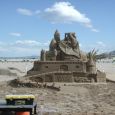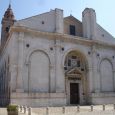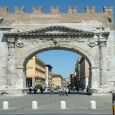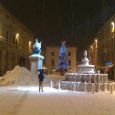Rimini
Advertisement
By Air
Rimini has its own international airport which is the second in importance in the region, but the third as the number of passenger traffic.Born as a military airport (Rimini many pilots in the war including Blacksmith, Melandri and Grossi) has a runway / landing very long, so it is sometimes used as a secondary airport of Bologna in particular for aircraft and large freighters that could land anywhere else.Connect the main European airports every day, such as Rome-Fiumicino, London and Moscow, as well as intercontinental Sharm el Sheik.The other major international or intercontinental airport facilities closer to the city are: Forlì (60 km), Bologna-Ducati (approximately 115 km), Ancona-Falconara (about 95 km), Venice-Tessera (approximately 230 km) and Rome -Fiumicino (about 355 miles).
By Train
Rimini is provided with six railway stations (Rimini, Rimini Fiera, Rimini Miramare, Rimini Rivazzurra, Rimini Viserba and Rimini Torre Pedrera).It is served by the Federico Fellini Airport, airport of Rimini and San Marino.
By Road
Rimini is connected to the national motorway network via two exits, north and south of the city, the A14 Bologna-Taranto.Other important roads that touch the city is of Roman origin and are the SS 9 Via Emilia, which connects with all the capitals of the Emilia-Romagna, Ravenna and Ferrara apart, and extends up in Lodi and Milan.The Adriatic Highway 16 which connects to Otranto Padua serves all the major towns on the Adriatic coast and Via Flaminia, which starting from the famous Arch of Augustus connects the city with the capital Rome.
By Bus
The administration of urban public transport is the TRAM Rimini.
Museum of the City of Rimini
is located in Via Tonini (corner of Piazza Ferrari), in the former convent of the Jesuits and former Civil Hospital.It was opened in 1990.The building was designed by Alfonso Torreggiani, and built between the years 1746 and 1755, was the site of a monastery and college of Jesuits, and in recent years was in Rimini hospital.The museum is divided into several sections, including such notable are the archaeological section, and the medieval section.A large space is devoted to the painting of the fourteenth century and houses, as well as numerous works from the School of Rimini of the fourteenth century, including works by Giovanni Bellini, Domenico Ghirlandaio, Guercino, Guido Cagnacci, etc.The archaeological section presents the findings of the so-called " Surgeon's House ", a Roman house of the late second century, discovered in 1989 in Piazza Ferrari a few meters from the museum. Of exceptional importance for the number and variety of surgical instruments, which represent one of the most important medical tool kit ever found. There are numerous Roman mosaics of exceptional beauty and importance.Some rooms are set up to house the museum's temporary exhibitions and cultural shows.
Novelli Theatre
is the presence of a permanent theater in Rimini from 1681, when the City Council decided to transform the hall into a theater Arengo large wooden boxes in project of the Venetian Pietro Mauri.The amateur dramatic performances of the companies represented here were followed for a short time by the young Carlo Goldoni, who moved to Rimini to study at the Dominican School of Philosophy.The structures of the theater soon proved insufficient for the limited number of places and was dismantled in 1839 due to static reasons.The Buonarroti Theatre, founded in 1816 and attended mainly by members of the aristocracy of Rimini, had to be closed in 1843 for threatening to collapse.Between 1842 and 1857 was built the Teatro Comunale Vittorio Emanuele II, designed by Luigi Poletti now according to traditional canons of nineteenth-century theater.
Malatesta Temple
officially named the Cathedral of St Columba and usually indicated by the citizens as the Duomo is the main church of Rimini.Completely renovated under the lordship of Sigismondo Pandolfo Malatesta, with contributions from artists such as Leon Battista Alberti, Matteo de Pasti, Agostino di Duccio and Piero della Francesca is although not complete the key work of the Renaissance Rimini and one of the architectures significant of the Italian Quattrocento in general.
Arch of Augustus
It is the oldest Roman arch left.Marked the end of the Via Flaminia, which connected the cities of Romagna to the imperial capital, flowing into today's Corso d Augusto, the decumanus up, leading to the entrance to another street, the Via Emilia.The style that it is composed is simple yet solemn.At the tube station, which is particularly wide, is flanked by two half-columns with stems fluted capitals Corinthian.The four medallions placed close to the capitals, are as many Roman gods. Addressed to Rome, we find Jupiter and Apollo, facing the interior of the city is Neptune and the goddess Roma.Its main function, as well as to act as a city gate, was to support the huge bronze statue of Emperor Augustus, portrayed in the act of leading a chariot.
Tiberius Bridge
Its construction began in 14 AD during the reign of Augustus and the end of the work took place in 21 AD, during the reign of Tiberius.Today is the emblem of the city.Built in Istria stone as the Arc, it also takes a sober and harmonious at the same time.The structure consists of 5 arches round arches with niches between taxes blind arches.The size of these bows varies increasingly as we move toward the center, where we find the largest arc.From the bridge came two consular roads, the Via Emilia, who came up to Piacenza and Via Annia Popilia- up that came to Aquileia.
Arengo Palace
is a majestic Romanesque-Gothic building of Rimini, located in Piazza Cavour.Surmounted by battlements, gathered here in the late Middle Ages, the council of the people of Rimini.The palace, built in 1204, retains the upper floor of the frescoes of the school of Rimini 1300.
Castle Sismondo
The current structure is merely remained the core of the castle, which was originally defended by a further round of walls and a moat.Work began in May 1437 and lasted about 15 years.The castle, with the Malatesta Temple, were the two main interventions by Pandolfo took over the city, made without following a single development project, but rather dictated by the desire to dominate the town such as architectural unequivocal signs of power.The structure was built over the old family homes and dismantling a section of the city walls.It rose an ancient village overlooking the city with six towers, cut off today.In 1821 the castle was used as barracks by the police, in 1826 the outer walls were demolished and filled the gap.After a long period of decline, the castle was sold for thirty years, from the municipality that owns it, the Fondazione Cassa di Risparmio di Rimini, who has completed the restoration of the manor of equipping all the technological systems (security and microclimatic control) necessary for hosting special exhibits since 2000.
May - August
October - January






